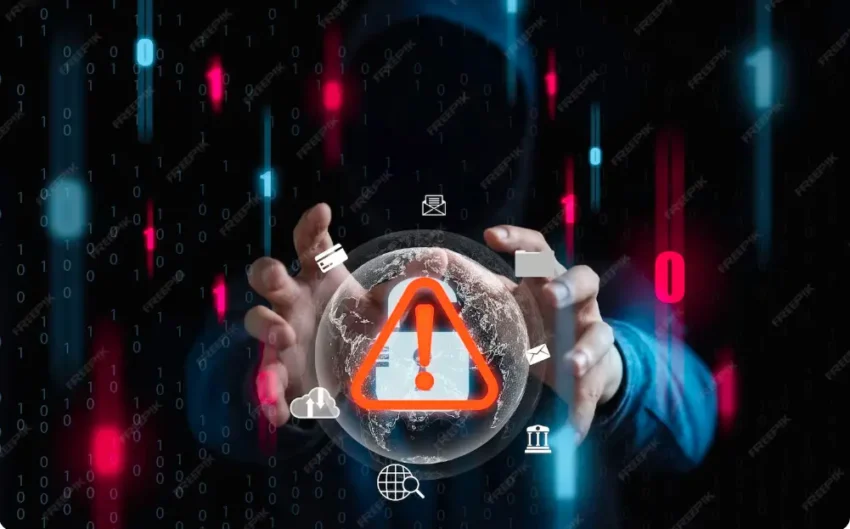Introduction
In today’s hyper-connected world, the term Cyber Threats has become more than just a buzzword. It represents one of the most significant challenges faced by individuals, businesses, and governments globally. Cyber threats can disrupt daily operations, compromise sensitive information, and lead to substantial financial losses. This comprehensive guide explores the various types of cyber threats, their impact, and effective strategies to safeguard against them.
What Are Cyber Threats?
Cyber threats refer to malicious attempts by hackers, cybercriminals, or other entities to damage, disrupt, or gain unauthorized access to computer systems, networks, or digital devices. These threats come in many forms, including malware, phishing, ransomware, and more. The objective is often to steal sensitive information, disrupt services, or exploit vulnerabilities for financial or political gain.
Types of Cyber Threats
Understanding the different kinds of cyber threats is essential for building a robust defense mechanism. Below are some of the most common types:
1. Malware
Malware, short for malicious software, is a broad category of harmful software designed to damage or exploit devices. It includes viruses, worms, trojans, spyware, and ransomware. Malware can corrupt files, steal information, or take control of systems remotely.
2. Phishing Attacks
Phishing attacks involve tricking individuals into revealing sensitive information such as usernames, passwords, or credit card details by pretending to be a trustworthy source. These attacks often come via emails, fake websites, or instant messages.
3. Ransomware
Ransomware is a type of malware that encrypts a victim’s data, making it inaccessible until a ransom is paid to the attacker. This has become one of the most dangerous cyber threats, targeting individuals, corporations, and even government agencies.
4. Denial of Service (DoS) and Distributed Denial of Service (DDoS)
These attacks aim to overwhelm a website or network with traffic, rendering it inaccessible to legitimate users. DDoS attacks use multiple systems to flood the target simultaneously, making mitigation more challenging.
5. Man-in-the-Middle (MitM) Attacks
In MitM attacks, cybercriminals secretly intercept communication between two parties to steal or alter information. This can occur on unsecured public Wi-Fi or compromised networks.
6. Zero-Day Exploits
Zero-day exploits target vulnerabilities in software or hardware that are unknown to the vendor. Because no patch exists initially, these attacks can be highly damaging.
The Impact of Cyber Threats
Cyber threats can have devastating consequences across different sectors:
- Financial Losses: Cyberattacks often result in direct financial theft or indirect costs like business disruption and recovery expenses.
- Data Breaches: Sensitive data, including personal information, intellectual property, and financial records, can be exposed.
- Reputation Damage: Companies suffering cyberattacks may lose customer trust and market value.
- Legal and Regulatory Consequences: Failure to protect data adequately can result in hefty fines and legal actions.
- National Security Risks: Cyber threats against government infrastructure can compromise national security.
Common Cyber Threat Targets
While cyber threats can affect anyone, some common targets include:
- Individuals: Personal computers, mobile devices, and social media accounts.
- Businesses: From small enterprises to multinational corporations, focusing on intellectual property and customer data.
- Government Entities: Critical infrastructure and confidential data.
- Healthcare Providers: Patient records and hospital systems.
- Financial Institutions: Bank accounts and financial transactions.
How to Protect Against Cyber Threats
Defending against cyber threats requires a multi-layered approach. Here are effective strategies:
1. Use Strong, Unique Passwords
Passwords are the first line of defense. Use complex passwords and change them regularly. Consider using a password manager to keep track of them.
2. Keep Software Updated
Regular updates and patches fix vulnerabilities that attackers can exploit. Enable automatic updates wherever possible.
3. Implement Firewalls and Antivirus Software
Firewalls monitor incoming and outgoing traffic, while antivirus software detects and removes malicious files.
4. Educate Yourself and Employees
Many cyber threats exploit human error. Regular training on recognizing phishing attempts and safe internet practices can reduce risk.
5. Backup Data Regularly
Maintain up-to-date backups of important data offline or in secure cloud storage to recover quickly after an attack.
6. Use Multi-Factor Authentication (MFA)
MFA adds an extra layer of security by requiring two or more verification steps, making unauthorized access more difficult.
7. Secure Your Network
Use strong encryption for Wi-Fi, disable unused network services, and consider VPNs for secure remote access.
Emerging Trends in Cyber Threats
The cyber threat landscape is constantly evolving. Here are some emerging trends:
- AI-Powered Attacks: Cybercriminals use artificial intelligence to create more sophisticated attacks.
- IoT Vulnerabilities: Internet of Things devices often have weak security, making them prime targets.
- Supply Chain Attacks: Targeting third-party vendors to compromise larger organizations.
- Cryptojacking: Unauthorized use of someone’s device to mine cryptocurrency.
The Role of Cybersecurity Professionals
Cybersecurity experts play a critical role in defending against cyber threats. Their responsibilities include:
- Conducting risk assessments
- Implementing security policies
- Monitoring networks for suspicious activity
- Responding to incidents and breaches
FAQs About Cyber Threats
Q1: What are cyber threats?
A: Cyber threats are malicious activities aimed at damaging, stealing, or gaining unauthorized access to computers, networks, or data.
Q2: What are the most common types of cyber threats?
A: The common types include malware, phishing attacks, ransomware, denial-of-service (DoS) attacks, man-in-the-middle (MitM) attacks, and zero-day exploits.
Q3: How can I protect myself from cyber threats?
A: Use strong passwords, keep software updated, install antivirus and firewalls, enable multi-factor authentication, and stay aware of phishing attempts.
Q4: What is ransomware and why is it dangerous?
A: Ransomware is malware that encrypts your data and demands a ransom for its release. It is dangerous because it can lock you out of critical files and systems.
Q5: Can cyber threats affect individuals or only businesses?
A: Cyber threats affect both individuals and businesses. Anyone using digital devices connected to the internet can be a target.
Q6: What is phishing?
A: Phishing is a cyber attack where attackers pretend to be a trustworthy entity to trick victims into sharing sensitive information like passwords or credit card numbers.
Q7: How do cybercriminals use man-in-the-middle attacks?
A: In MitM attacks, criminals intercept communications between two parties to steal or alter information without the parties knowing.
Q8: Why is keeping software updated important for cybersecurity?
A: Updates patch security vulnerabilities that hackers exploit, reducing the risk of cyberattacks.
Q9: What are zero-day exploits?
A: Zero-day exploits target unknown vulnerabilities in software or hardware that have no available fix yet.
Q10: How can businesses prepare for emerging cyber threats?

A: Businesses should invest in cybersecurity training, regularly update security protocols, use advanced threat detection tools, and have an incident response plan in place.
Conclusion
Cyber threats represent a growing danger in our digital age. Understanding these threats, their potential impact, and how to defend against them is essential for protecting personal and organizational data. By adopting best practices, investing in cybersecurity, and staying informed about the latest trends, individuals and businesses can mitigate risks and ensure a safer digital future.
